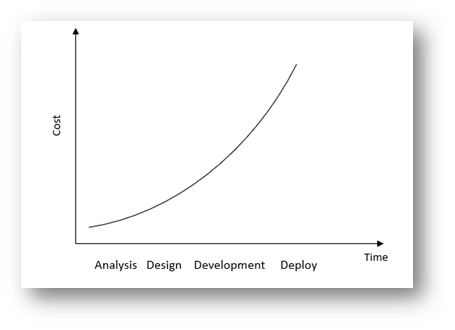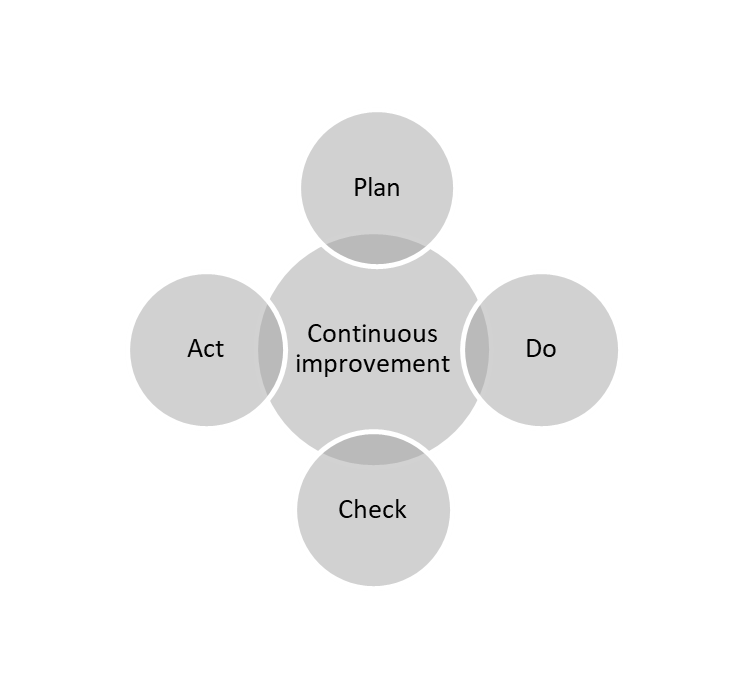Elevating Your Test Strategy for Effective Quality Assurance
Quality assurance is an indispensable aspect of software development and product delivery. Ensuring that your software meets the desired quality standards not only enhances customer satisfaction but also reduces post-launch issues, saving time and resources. In this comprehensive guide, we will explore the nuances of test strategy and quality assurance, providing you with valuable insights to optimize your approach.
"Checking the thermometer won’t improve the weather."
Have you ever experienced a go-live with rollbacks, corrections scripts, dissatisfied end users and unhappy stakeholders? Even though you executed a tremendous amount of test cases and solved numerous defects? These real-life scenarios demonstrate that the real meaning of test activities is often misunderstood. Testing to improve quality is like checking the thermometer and expecting the weather to change. While validating the acceptance criteria and bug reporting are essential test activities, they are just one piece of the larger puzzle. True quality assurance goes beyond requirement validation and bug detection. It involves a strategic approach to prevent defects, to promote effective collaboration and to foster continuous improvement. This blog post includes a 5-step approach to overcome common testing misconceptions in your organization.
1. Setting Clear Test Objectives
Effective quality assurance starts with a clear understanding of your testing goals and objectives. Why do you need to test, and what do you aim to achieve through testing? How does testing contribute to a successful project delivery? These are fundamental questions that must be addressed before diving into test execution. Many organizations rush into executing test cases or investing in advanced test management tools without establishing a solid foundation of clear test objectives.
Setting clear test objectives serves multiple purposes:
- Alignment: It aligns testing efforts with the broader organizational goals and objectives.
- Clarity: It provides a clear roadmap for the testing process, reducing ambiguity.
- Focus: It ensures that testing efforts are directed toward what truly matters.
- Engagement: It engages team members in discussions about quality, making the purpose of testing explicit.
Quality is not an abstract concept but a tangible goal that can be achieved by setting and adhering to well-defined test objectives. This shift in mindset is the first step towards effective quality assurance.
Setting the test objectives will also make people reflect about quality. Consequently, they will start asking questions and in the end they will be more likely to support testing activities because the purpose was made explicit. Quality will no longer only exist on paper, but it will actually start to live in people’s minds. So, where to start?
2. Building a Solid Foundation
Quality assurance is not something that can be tacked on at the end of a project. To release with confidence, quality must be embedded in every phase of the software development process. It starts with assessing the foundation, and in software development, that foundation is built on clear and well-defined requirements.
Requirements form the cornerstone of your testing strategy. Quality assurance activities should commence from the moment requirements are documented. Well-crafted requirements provide the necessary basis for designing effective test cases and validating the software against desired outcomes. By improving the quality of requirements, you set the stage for enhanced results. This shift-left approach fundamentally changes the game by preventing defects at their source.
3. Changing the Game: Preventing Defects
Traditionally, testing has been seen as the process of finding defects. However, reporting a high number of identified and resolved defects is not an indicator of good quality. In fact, it often signifies the opposite—poor quality. This perspective shift is central to modern quality assurance.
Testing should not be solely about finding defects; it should be about figuring out how to create products without defects in the first place. One of the core principles of quality assurance is that preventing defects is more cost-effective than fixing them later. By addressing potential issues early in the development process, organizations avoid costly consequences, including reputational damage, post-launch crises, delays, and customer dissatisfaction.
Defect prevention requires robust collaboration and communication across all project stakeholders. It calls for a proactive approach to identify and mitigate issues before they become major roadblocks. Instead of acting as controllers at the end of a project, testers should play a crucial role in helping developers and business analysts avoid problems from the outset.[1]
 Figure 1: Cost of a defect compared to the development process over time
Figure 1: Cost of a defect compared to the development process over time
4. Building Bridges: Collaborative Testing
Testing activities, particularly in agile environments, cannot exist in isolation. Even the most skilled test engineer with a well-crafted test strategy cannot single-handedly improve quality. Research in the World Quality report demonstrates this trend in an agile environment: ”This year’s data shows an increase in the presence of quality engineers embedded within agile scrum teams.”[2] Quality assurance is a collective responsibility, and the test engineer plays a pivotal role in its implementation.
When defining a strategic quality vision, collaboration and communication are key. Engage with all stakeholders involved or impacted by quality assurance, including developers, functional analysts, project managers, management, end-users, and other relevant parties. By involving these roles, you gain a holistic understanding of quality, leading to better outcomes.
5. Continuous Improvement: Unleashing the Power of Quality
In our dynamic and ever-evolving world, organizations must be prepared to capitalize on new opportunities continually. Quality assurance is not a static concept but one that should evolve with your organization's goals and industry trends.
To achieve ambitious quality goals, break them down into practical and achievable steps. Incremental progress allows organizations to make tangible improvements while maintaining the ability to adapt and pivot. Continuous improvement is closely tied to measurement.
Measurement is essential to track progress and identify areas for enhancement. Establish baselines and define quality metrics to monitor your organization's performance. Share these metrics and results with your team to create a collective focus on enhancing quality. Effective measurement involves both objective and subjective factors, providing a holistic view of your organization's quality performance.
When it comes to iterative improvement and continuous learning, organizations can achieve remarkable results when combining a pragmatic mindset with lean methodologies, such as the timeless, proven and enduring Quality circle of Deming (PDCA).

Figure 2: The Plan Do Check Act cycle
To fully embrace quality assurance, organizations must shift their mindset from "executing test cases" to defining clear objectives and a quality vision. Beginning with a clear vision engages people and generates buy-in. By taking small, achievable steps towards the long-term vision and making quality an integral part of daily work, organizations cultivate a culture of quality.
Remember, testing alone does not improve quality; it is the comprehensive approach that drives success. If you're eager to learn more about how to enhance efficiency and overall quality within your organization, don't hesitate to reach out to us for further insights and guidance.
[1] Bridging the communication gap: Specification by Example and Agile Acceptance Testing by Gojko Adzic, 2018, Neuri Limited
[2] World Quality Report 14th Edition 2022-23, Capgemini, 2022, p. 12
Join Sogeti
Are you passionate about technology? Are Quality and Agility part of your DNA and do you want to work on exciting projects for leading companies?
Sogeti is a recognized leader in the field of Quality Engineering & Testing and offers many opportunities for professional growth through training, certification and challenging projects.
Check out our latest vacancies and join the ValueMakers of the digital age!
- InessaTest Manager - Sogeti Belgium
 InessaTest Manager - Sogeti Belgium
InessaTest Manager - Sogeti Belgium
Over the span of 8 years, Inessa has cultivated extensive expertise in Quality Engineering. Her personal mission is to empower individuals and organizations to achieve peak efficiency. Employing a pragmatic approach that aligns with business and strategic objectives, Inessa has been instrumental in elevating the quality standards of organizations across diverse sectors. Recently, Inessa joined the Sogeti regional office in Ghent.
Want to join Sogeti and become a ValueMaker in the digital age?
Check out our vacancies


![[Missing text '/pageicons/altmail' for 'English']](/Static/img/email.png)
